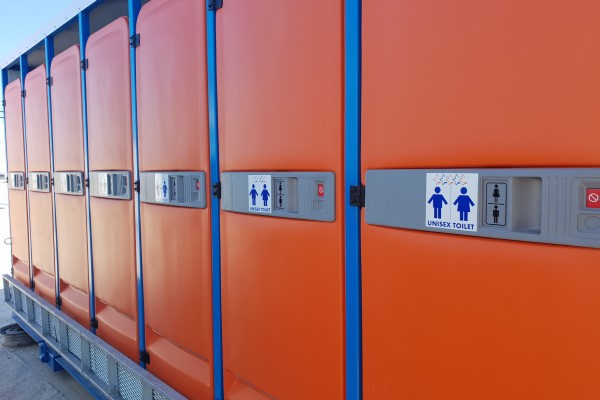Intelligent toilets aims to improve work site sanitation

A first-of-its-kind technology in portable ablution blocks could spell the end of overflowing toilets, improving worksite sanitation and potentially saving time and money. Developed by Instant Products Group, the monitoring technology allows for real-time, remote monitoring of waste generated, replacing antiquated alarm systems.
Instant Product Group managing director Scott Rawson says up until now, toilet waste has been monitored through a basic float system that simply triggers a warning light when full.
“It’s a flawed system as there’s no way of knowing how quickly the waste tank is filling up, and even once the alarm is triggered it still relies on someone noticing, contacting the company and scheduling for the waste to be removed,” Scott says.
“We’ve developed a real-time monitoring system that can map usage and waste generated, accurately forecast how long it will take until the tanks are full and send text and email alerts when the tanks reach pre-set levels, which we can customise.”
Scott says the monitoring technology allows for better planning, a better user experience and improves general health and safety standards on site, whether at a work site or an event. The technology also monitors how often a particular toilet block is used, which can assist with future planning.
Scott states the technology offers several key benefits to users across a wide range of industries, including real-time tracking at events, improving waste removal planning and scheduling as well as avoiding the need for waste trucks to be on standby by accurately predicting how quickly tanks are filling and when they’re likely to reach capacity.
In mining, spills and overflows are a health and safety issue, with an incident resulting in time-consuming admin, plus call-out costs associated with urgent waste removal and clean up. By minimising the risk of an overflow incident, site sanitation is improved and adds to overall worker wellbeing.
Waste monitoring can also avoid over-scheduling of waste removal in construction, whereby toilet blocks are emptied even when use has been minimal.
Toilets in locations that are difficult to access (whether that be regional or remote sites or in out-of-the-way locations on a golf course or running event tracks) can be monitored without the need for personnel to physically inspect the facility, which creates cost and time efficiencies.
